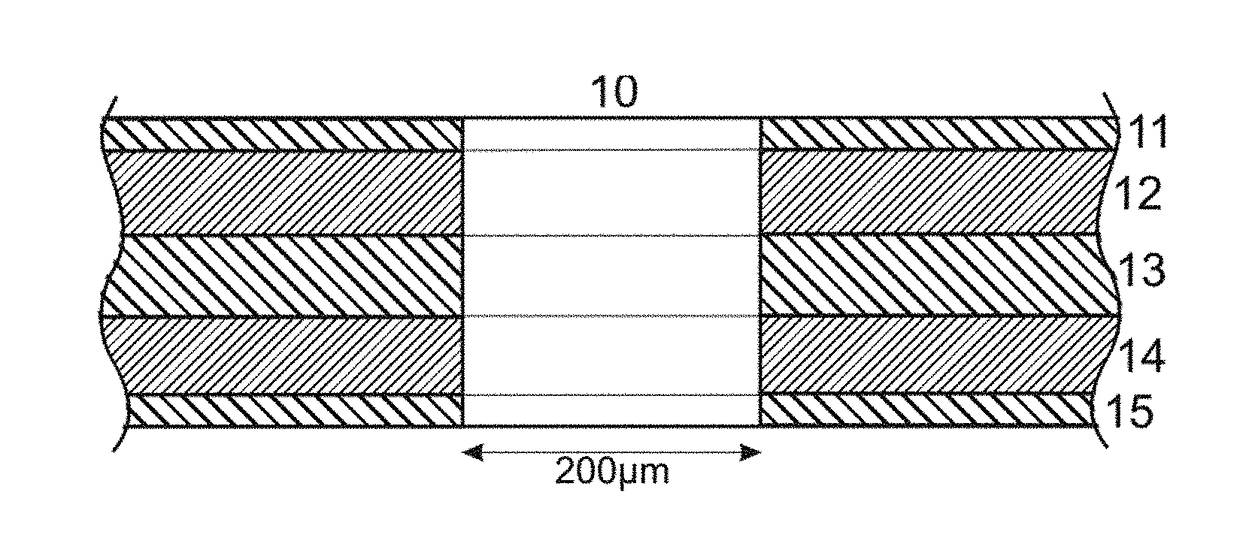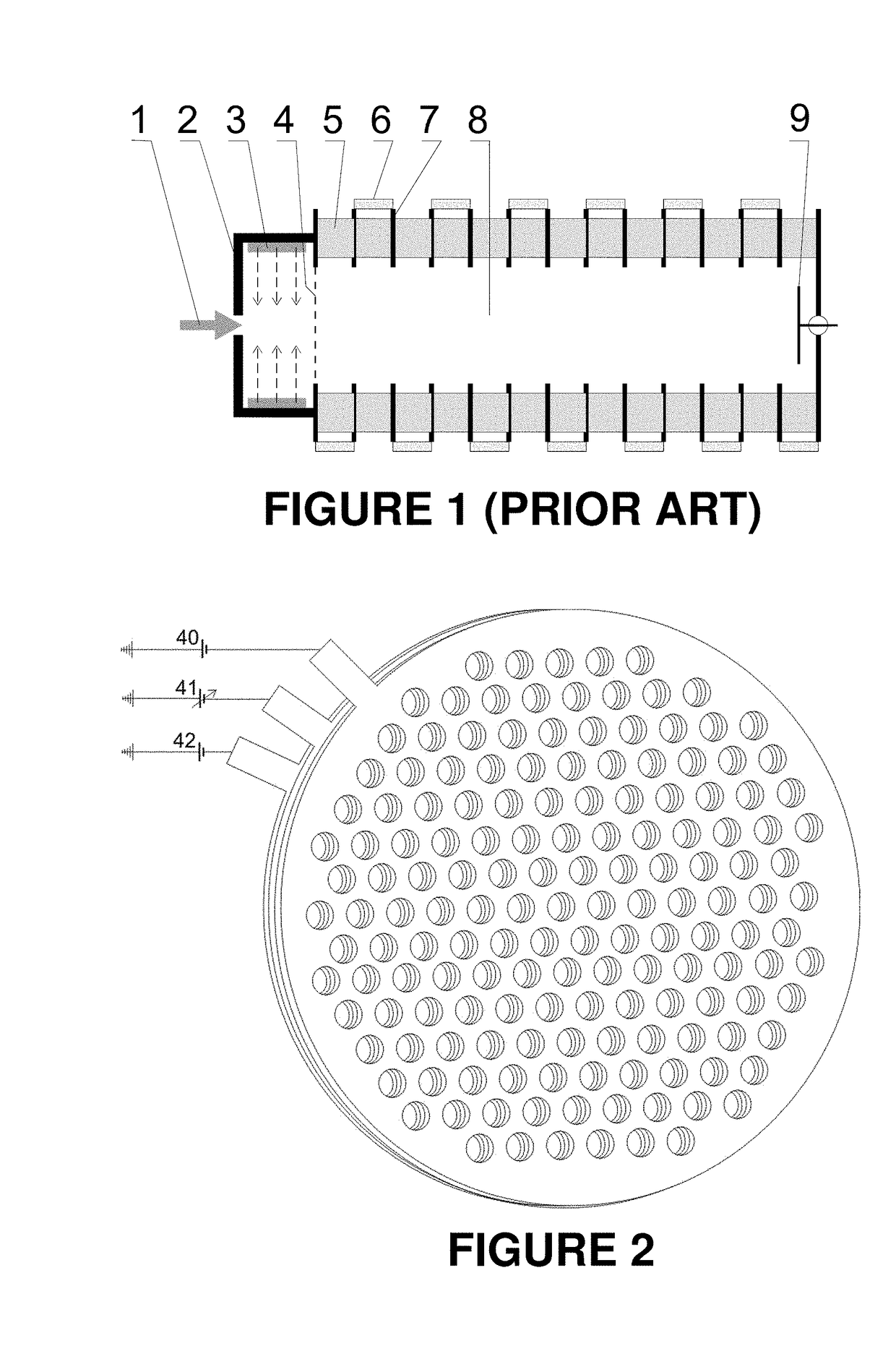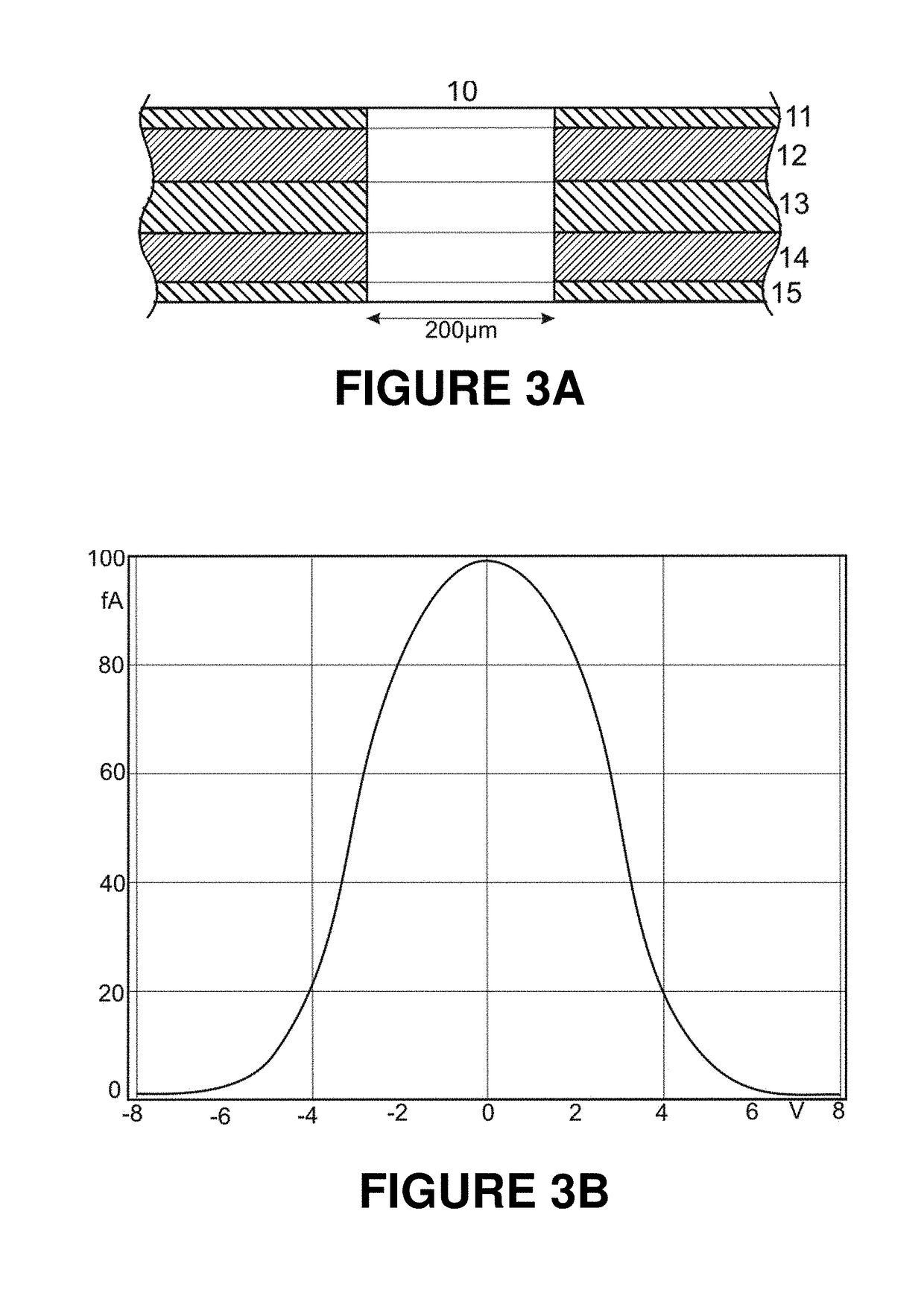Gating element in ion mobility spectrometers
a gating element and mobility spectrometer technology, applied in the field of gating elements, can solve the problems of unfavorable coplanar wire grids according to bradbury-nielsen, unfavorable use of grids as gating elements, and thin wires are susceptible to vibrations, and achieve the effect of easy miniaturization
- Summary
- Abstract
- Description
- Claims
- Application Information
AI Technical Summary
Benefits of technology
Problems solved by technology
Method used
Image
Examples
Embodiment Construction
[0033]The invention proposes that, instead of a grid with a large number of thin individual bars (or a series of such grids), a layered apertured plate is used, as shown schematically in FIG. 2. This apertured plate comprises three conductive and two insulating (or low-conductivity) layers, which are arranged alternately. The conductive layers (“electrode layers”) have tabs to create the contacts. Such an apertured plate can comprise layers of copper-Kapton-copper-Kapton-copper, or layers of silver-ceramic-silver-ceramic-silver, for example. When copper is used, it is favorable to finish the surfaces which are in contact with the gas with a metal which is more noble, such as gold or chromium. The layers are firmly bonded with each other. Bonding techniques such as calendering or adhesive bonding are known from the production of circuit boards. The surfaces of the ceramic layers can be metallized in advance.
[0034]An apertured plate according to the invention can be any shape, for exa...
PUM
| Property | Measurement | Unit |
|---|---|---|
| diameter | aaaaa | aaaaa |
| diameter | aaaaa | aaaaa |
| thickness | aaaaa | aaaaa |
Abstract
Description
Claims
Application Information
 Login to View More
Login to View More - R&D
- Intellectual Property
- Life Sciences
- Materials
- Tech Scout
- Unparalleled Data Quality
- Higher Quality Content
- 60% Fewer Hallucinations
Browse by: Latest US Patents, China's latest patents, Technical Efficacy Thesaurus, Application Domain, Technology Topic, Popular Technical Reports.
© 2025 PatSnap. All rights reserved.Legal|Privacy policy|Modern Slavery Act Transparency Statement|Sitemap|About US| Contact US: help@patsnap.com



